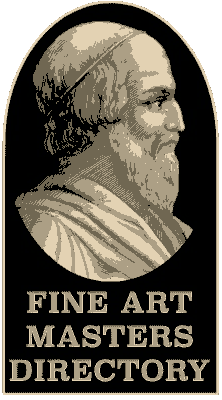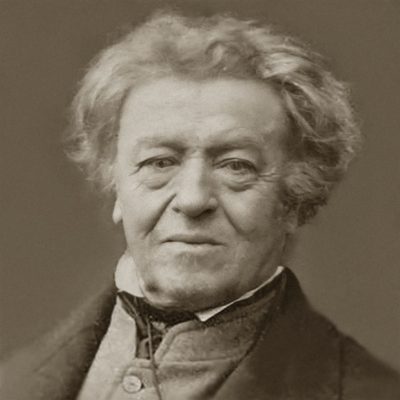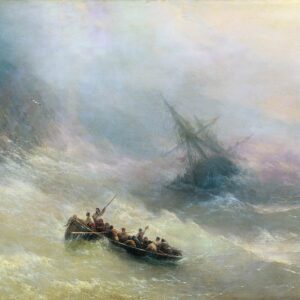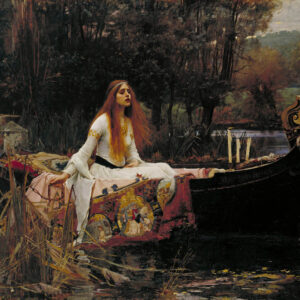Jean-Baptiste-Camille Corot (UK: /ˈkɒroʊ/ KORR-oh,[1] US: /kəˈroʊ, kɔːˈroʊ/ kə-ROH, kor-OH,[2][3][4] French: [ʒɑ̃ batist kamij kɔʁo]; July 16, 1796[5] – February 22, 1875) was a French landscape and portrait painter as well as a printmaker in etching. He is a pivotal figure in landscape painting and his vast output simultaneously referenced the Neo-Classical tradition and anticipated the plein-air innovations of Impressionism.
Mid-career :
During his two return trips to Italy, he visited Northern Italy, Venice, and again the Roman countryside. In 1835, Corot created a sensation at the Salon with his biblical painting Agar dans le desert (Hagar in the Wilderness), which depicted Hagar, Sarah’s handmaiden, and the child Ishmael, dying of thirst in the desert until saved by an angel. The background was likely derived from an Italian study.[33] This time, Corot’s unanticipated bold, fresh statement of the Neoclassical ideal succeeded with the critics by demonstrating “the harmony between the setting and the passion or suffering that the painter chooses to depict in it.”[33] He followed that up with other biblical and mythological subjects, but those paintings did not succeed as well, as the Salon critics found him wanting in comparisons with Poussin.[34] In 1837, he painted his earliest surviving nude, The Nymph of the Seine. Later, he advised his students “The study of the nude, you see, is the best lesson that a landscape painter can have. If someone knows how, without any tricks, to get down a figure, he is able to make a landscape; otherwise he can never do it.”[35]
Through the 1840s, Corot continued to have his troubles with the critics (many of his works were flatly rejected for Salon exhibition), nor were many works purchased by the public. While recognition and acceptance by the establishment came slowly, by 1845 Baudelaire led a charge pronouncing Corot the leader in the “modern school of landscape painting”. While some critics found Corot’s colors “pale” and his work having “naive awkwardness”, Baudelaire astutely responded, “M. Corot is more a harmonist than a colorist, and his compositions, which are always entirely free of pedantry, are seductive just because of their simplicity of color.”[36] In 1846, the French government decorated him with the cross of the Légion d’honneur and in 1848 he was awarded a second-class medal at the Salon, but he received little state patronage as a result.[37] His only commissioned work was a religious painting for a baptismal chapel painted in 1847, in the manner of the Renaissance masters.[38] Though the establishment kept holding back, other painters acknowledged Corot’s growing stature. In 1847, Delacroix noted in his journal, “Corot is a true artist. One has to see a painter in his own place to get an idea of his worth…Corot delves deeply into a subject: ideas come to him and he adds while working; it’s the right approach.”[39] Upon Delacroix’s recommendation, the painter Constant Dutilleux bought a Corot painting and began a long and rewarding relationship with the artist, bringing him friendship and patrons.[39] Corot’s public treatment dramatically improved after the Revolution of 1848, when he was admitted as a member of the Salon jury.[40] He was promoted to an officer of the Salon in 1867.
Having forsaken any long-term relationships with women, Corot remained very close to his parents even in his fifties. A contemporary said of him, “Corot is a man of principle, unconsciously Christian; he surrenders all his freedom to his mother…he has to beg her repeatedly to get permission to go out…for dinner every other Friday.”[41] Apart from his frequent travels, Corot remained closely tethered to his family until his parents died, then at last he gained the freedom to go as he pleased.[42] That freedom allowed him to take on students for informal sessions, including the Jewish artists Édouard Brandon and future Impressionist Camille Pissarro, who was briefly among them.[39] Corot’s vigor and perceptive advice impressed his students. Charles Daubigny stated, “He’s a perfect Old Man Joy, this Father Corot. He is altogether a wonderful man, who mixes jokes in with his very good advice.”[43] Another student said of Corot, “the newspapers had so distorted Corot, putting Theocritus and Virgil in his hands, that I was quite surprised to find him knowing neither Greek nor Latin…His welcome is very open, very free, very amusing: he speaks or listens to you while hopping on one foot or on two; he sings snatches of opera in a very true voice”, but he has a “shrewd, biting side carefully hidden behind his good nature.”[44]
By the mid-1850s, Corot’s increasingly impressionistic style began to get the recognition that fixed his place in French art. “M. Corot excels…in reproducing vegetation in its fresh beginnings; he marvelously renders the firstlings of the new world.”[45] From the 1850s on, Corot painted many landscape souvenirs and paysages, dreamy imagined paintings of remembered locations from earlier visits painted with lightly and loosely dabbed strokes.[46]


























